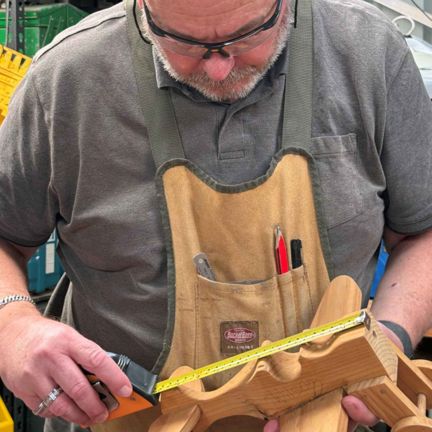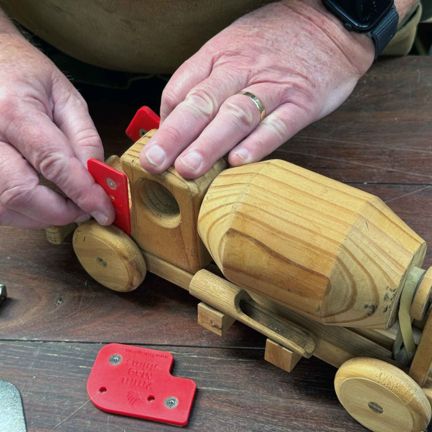Glenn’s story
In a past life, I was a manual arts teacher who taught woodwork, and related subjects. When I began to lose my vision, it became impractical for me to teach.
However, I still like to dabble in woodwork in my home workshop, making toys for my grandchildren or pieces of furniture, and so on. My goal was to continue with this despite my vision loss.
One of the biggest problems I have is with measurements. Accurate measurements are most important if I want things to fit together properly.
The usual technology used is insufficient for my purposes. It was then that I realised I needed Assistive Technology (AT) to help me.


Tools of the trade: AT for measuring
Talking tape measure
The first AT item I needed to find was a suitable tape measure which was easy to read or even better, one that would read measurements to me.
I began my search on the internet and visited hardware stores. I found two such products. Both read out the measurements. The first is a cheaper brand that operates the same as a normal tape measure, but it reads the measurements out loud.
The second, a 'Tape King Talking Tape Measure with Spirit Level: Opens in new window ' is more expensive. It includes a level and the ability to add or subtract measurements from each other. I bought the first, but it was not well made so I bought the second and that is the one I use most of the time.
Measuring gauges
While a tape measure is good for measurements over 50mm it can be cumbersome for smaller measurements. For this, I found two solutions:
The first is a collection of alloy blocks called 'Right on Precision Set Up Block Sets: Opens in new window ' that have been specifically machined to set thicknesses. This idea is based on a machinist 1, 2, 3 block. By holding the blocks in position, I can feel the correct measurements. I combine the blocks as needed to make a larger size.
I also have a set of thin gauges which act like feeler gauges. These 'Mag Shim Magnetic Gauges: Opens in new window ' give me the ability to feel very small measurements of a few millimetres. They are magnetised together and sit in the pocket of my workshop apron. This saves me from having to try and read a standard ruler.
I use several other tools, jigs, and processes which help me to work safely in the workshop. Probably the most important thing is to work carefully and slowly to make sure that I get things right. The adage, 'measure twice, cut once' is very important to me.
I wear gloves to protect my hands, an apron to protect me, and, of course, safety glasses to help protect what remains of my vision.


-(1).jpg?width=485&height=320)

Share Article: